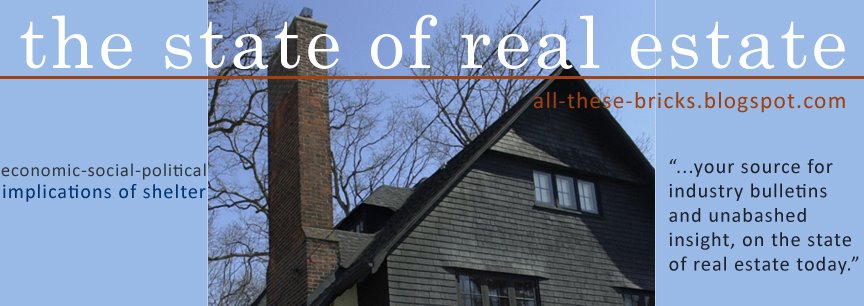.
.
June 3, 2009 -- In the first four months of 2009, TREB (Toronto Real Estate Board) members reported 3,945 leased condominium apartments, representing a 38% increase over the 2,854 units leased during the same period in 2008. Almost 93 per cent of all residential rental transactions on the MLS® involved condominium apartments.
My take. between the lines..
1) The dangerous trend on the other side of the peek. With resale activity currently (as of this entry) closing in on 2005 levels, a period when people were asking "how long could such an escalation of values last?” Now people are asking the same question about how long such a deal will last on mortgage rates....waiting with baited breath, for any solid indication that economic rehabilitation is on the way.
However, when property values do not correct far enough, people who are looking to buy are left saying "I am not paying $$$, $$$ for that piece of (expletive deleted) and I do not have the $25,000 after closing to make that place liveable" or "Quality of life is important to me as well, so I'll rent a decent place instead and wait for indicators that the economy is on the mend"....Thus, city central condos fit the bill for hibernating ideas.
2) The piece of (expletive deleted) that people are frustrated by are the volumes of investment properties and estate sales that have endured the typical disrepair of tenancy and or neglect. With a feeling of a protracted depreciation on the horizon, such landlords or estates are unloading these investment/properties for what they feel will be the last opportunity to realize the highest price before “the whole show tanks". The sale of these properties also pushes out a great many tenants.
3) As the rate of savings for Canadians is decreasing and the amount of indebtedness is ballooning these out-bound tenants are more likely to take advantage of the run-up of new construction completion which has saturated the market for both leasing and buying.
Prior to this, there have been significant circumstances that I feel have created a misalignment between the reality of affordability and market sustainability. The natural levelling of value began to happen in 2007. In a very simple and understandable way; average house prices were coming in line with average incomes (that service mortgages).
But there was a larger influence that affected real estate in a very concentrated way. This was found in the discontinuation of the (insurability of) 40 year and zero down mortgages. But not so much as that in itself...but rather for the fact that the "spigot" was not closed with immediate effect...there was still plenty of time for the type of buyer who would use such a mortgage product to enter the market. And so they did...in droves.
Competing against one other, and driving up prices on (if memory serves, as I think record may show) purchases which were largely concentrated in the condo market. Surpassing resale houses for the first time, and where the affordability calculation of ownership is slightly different, but where the cashflow service to equity is considerably different.
The next article BLOG: August, PART 2 “Is there poison in the veins of the condo market?”
Wednesday, June 3, 2009
Subscribe to:
Posts (Atom)
+the+state.jpg)
